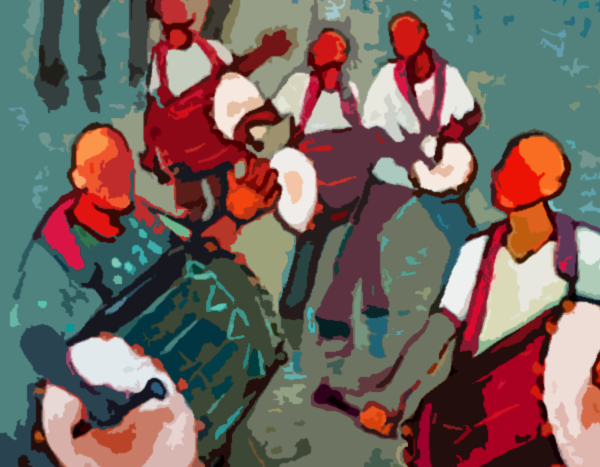History
Tassa Origins
The typical tassa group is as follows: the lead tassa player is called the "cutter" or "cut-man". The cutter plays the main, pulsating rhythm, or taal, or hand. The second tassa player is known as the "fulley" or "fuller", as their role is to make the rhythm or "taal" sound more full. The fulley plays a steady rhythm usually a simplified version of the main hand but in same metre and mode. The bass drummer adds power and depth to the taal with a constant, ground-shaking beat. The jhaanj man or brass man (sometimes played by a woman) plays the cymbals which enrich the overall sound of the ensemble with piercing or smooth metallic brass sounds creating by vibrating one cymbal against the other.

The rhythms (hands, taal) are quite complex and each have many variations. Some basic hands are tikora, wedding tikora, wedding hand, nagaara, chutney, dingolay, soca, chaubola. "Classical" hands include kalinda, khemta, bhajan, thumri, daadra. Hosay (Muharram) festival rhythms include saada mahaatam, chalta mahaatam, teen choppa, and nabi sarwar.
The tassa drums are played with sticks made from wild cane (called "chob", Hindi for cane sticks) or fiberglass. The sticks can either have very tightly wound masking tape at the top or the sap from a balata tree wound into a ball can form the head of a stick. When played, these pliant sticks are struck on the head of the drum and accomplish a unique sound because the flexibility of the stick is responsible for the roll rather than the regressive bouncing action of the head of the stick.